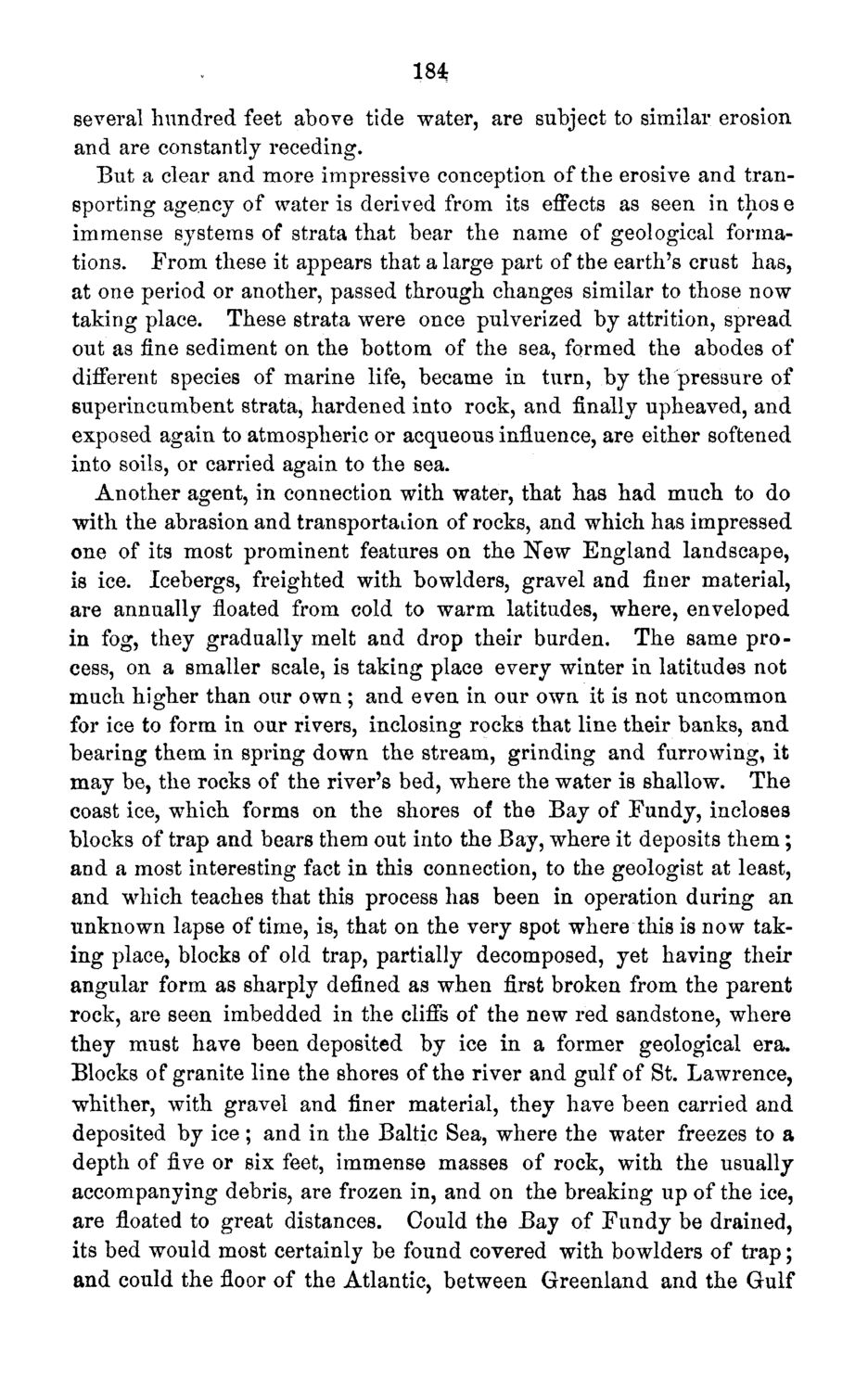| |
| |
Caption: Board of Trustees Minutes - 1871
This is a reduced-resolution page image for fast online browsing.

EXTRACTED TEXT FROM PAGE:
184 several hundred feet above tide water, are subject to similar erosion and are constantly receding. But a clear and more impressive conception of the erosive and transporting agency of water is derived from its effects as seen in thos e immense systems of strata that bear the name of geological formations. From these it appears that a large part of the earth's crust has, at one period or another, passed through changes similar to those now taking place. These strata were once pulverized by attrition, spread out as fine sediment on the bottom of the sea, formed the abodes of different species of marine life, became in turn, by the pressure of superincumbent strata, hardened into rock, and finally upheaved, and exposed again to atmospheric or aequeous influence, are either softened into soils, or carried again to the sea. Another agent, in connection with water, that has had much to do with the abrasion and transportation of rocks, and which has impressed one of its most prominent features on the New England landscape, is ice. Icebergs, freighted with bowlders, gravel and finer material, are annually floated from cold to warm latitudes, where, enveloped in fog, they gradually melt and drop their burden. The same process, on a smaller scale, is taking place every winter in latitudes not much higher than our own; and even in our own it is not uncommon for ice to form in our rivers, inclosing rocks that line their banks, and bearing them in spring down the stream, grinding and furrowing, it may be, the rocks of the river's bed, where the water is shallow. The coast ice, which forms on the shores of the Bay of Fundy, incloses blocks of trap and bears them out into the Bay, where it deposits t h e m ; and a most interesting fact in this connection, to the geologist at least, and which teaches that this process has been in operation during an unknown lapse of time, is, that on the very spot where this is now taking place, blocks of old trap, partially decomposed, yet having their angular form as sharply defined as when first broken from the parent rock, are seen imbedded in the cliffs of the new red sandstone, where they must have been deposited by ice in a former geological era, Blocks of granite line the shores of the river and gulf of St. Lawrence, whither, with gravel and finer material, they have been carried and deposited by ice; and in the Baltic Sea, where the water freezes to a depth of five or six feet, immense masses of rock, with the usually accompanying debris, are frozen in, and on the breaking up of the ice, are floated to great distances. Could the Bay of Fundy be drained, its bed would most certainly be found covered with bowlders of trap; and could the floor of the Atlantic, between Greenland and the Gulf
| |